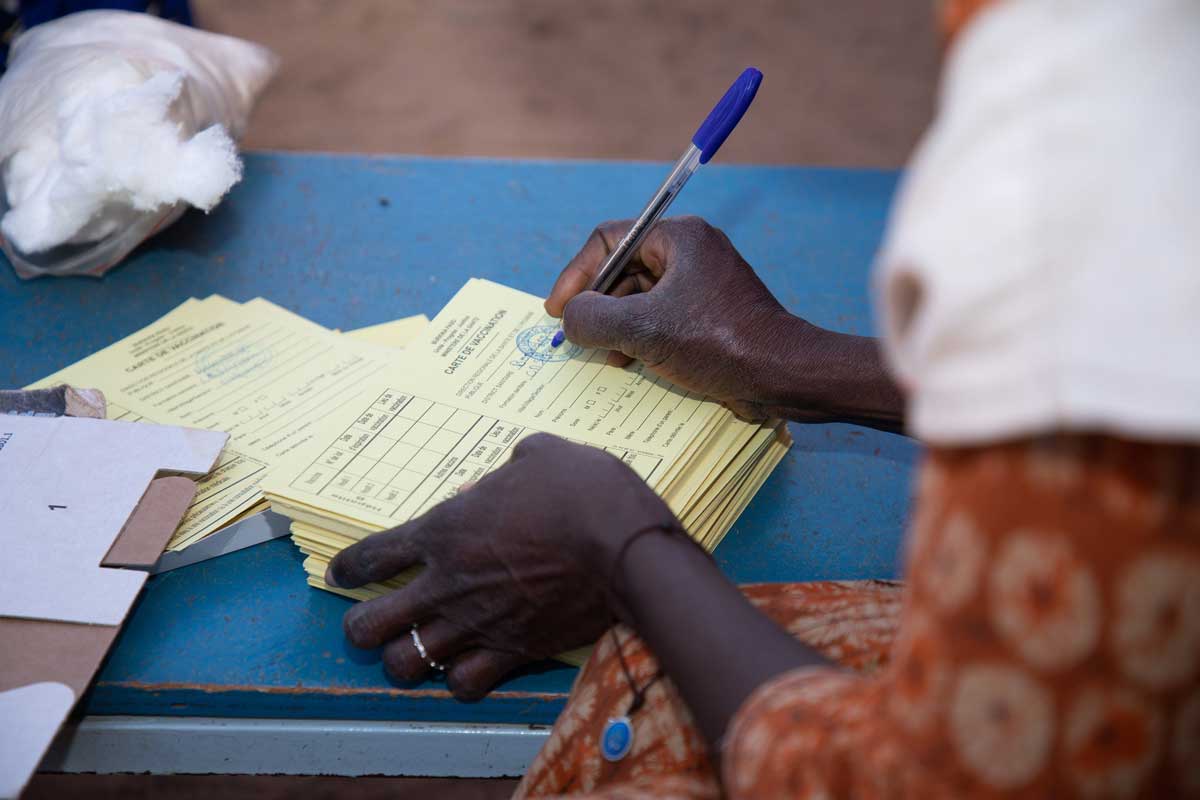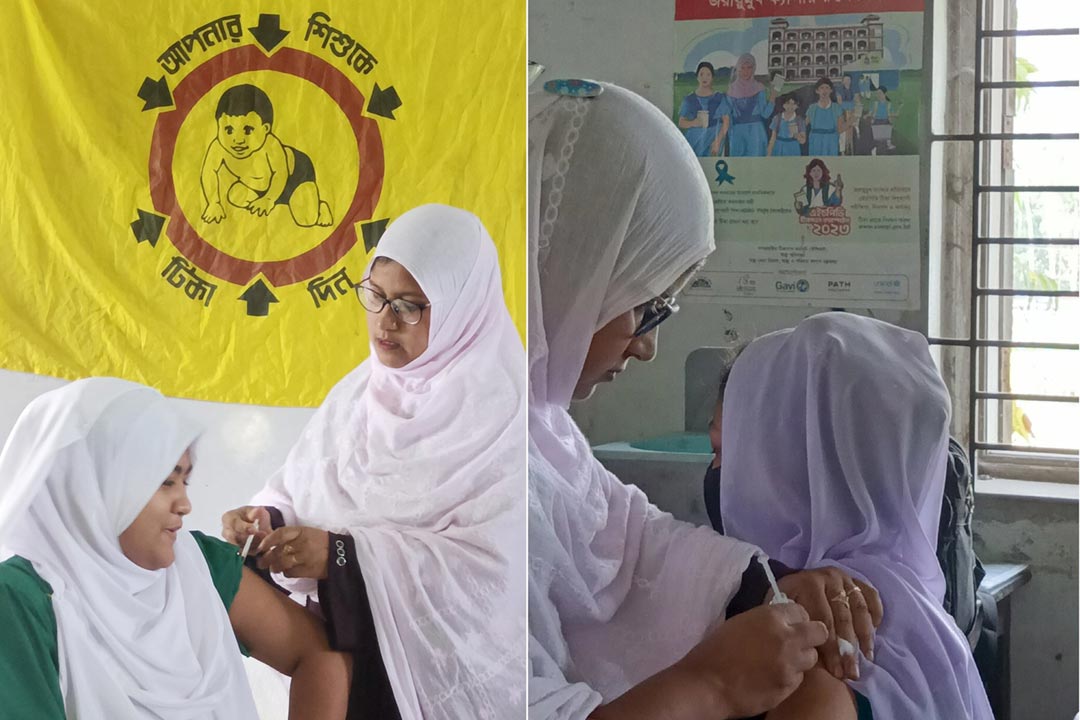Immunization insights at the push of a button
Intuitive new tool from PATH Living Labs provides impactful insights and boosts morale for immunization workers.
- 24 November 2022
- 5 min read
- by PATH

PATH's Living Labs use human-centered design (HCD) to accelerate health innovation by engaging end users in designing and testing innovations that increase health system capacity and advance health equity.
In Zambia, our team works directly with health care workers to problem-solve their systemic challenges. The process results in solutions that are grounded in the lived experience, perspective, and creativity of those who meet the challenge firsthand.
John Zgambo, an Innovation and Design Lead with our Living Labs, answers questions about promising new solutions for health care worker motivation, and how a new tool will bring those solutions to more users.
Q: What was your role on the motivation project?
A: Through HCD, my colleagues and I worked with frontline immunization workers to co-create motivational solutions. Worker motivation and job satisfaction are central issues that have often been overlooked. Together, we synthesized qualitative and quantitative data, refined prototypes, and supported users through our process from start to finish.
Q: Why is it important that the motivation of immunization workers be addressed?
A: More productive health systems, leads to better health, and subsequently, thriving economies. Because health workers are at the center of health systems, we needed to understand the factors that affect how well they deliver essential services. Addressing those factors would reap benefits in health service delivery and beyond.
Q: What is one of your favorite solutions you co-created with health care workers?
A: One of the most exciting co-created solutions is the WhatsApp Dashboard—a solution that helps health workers track children who receive vaccines outside of catchment areas.
Health workers in the district didn't have an easy way to share information with one another. This made the workers assume that a child who did not show up in the same facility had missed their immunization dose for that month, but the truth was that the child had gone to a different facility for that dose. Since there was no way of tracking, the child would be recorded as having missed a dose thus increasing the number of defaulting children.
Have you read?
Low performance and a lack of recognition have been reported as sources of demotivation for health workers. Our dashboard puts health care workers in touch with each other to share information, giving a more accurate picture of the workers' impact and what is happening in the district.
Q: How does the WhatsApp Dashboard work?
A: There are several health facilities in each district and in some cases, they sit between communities. A child from one community might attend immunization services from a facility in the next community because they are seasonal nomads.
Our users created WhatsApp Business groups because it is both low cost and has low data requirements. The groups were shared among the facilities to record the immunization details of "outside catchment" children in their respective facilities' groups. The facilities then reconcile the received immunization records in their registers. Previously, facilities would administer the vaccine, but they wouldn't put it on record if the child was from a different community, therefore missing bits of the child's vaccination journey.
Q: What do we know about the impact of improving health care worker motivation?
A: While health care workers can speak to the issues at the facilities, they often do not have the data to support making an improvement. To solve this, PATH is mapping the interventions to quantitative immunization data from the facilities. We are looking to access data from the Ministry of Health to measure improvements in immunization rates over the last two years where Living Labs has engaged with health facilities in the districts.
Q: What is the Insights Explorer tool and why is it important for others working in immunization?
A: The Insights Explorer tool is a catalog of demotivating factors found through Living Labs engagement with health care workers, and a playbook of solutions co-created with these workers using HCD practices.
It provides other actors an opportunity to learn from the knowledge we have gained during this process, particularly the hundreds of proven co-created solutions.
It also showcases the creativity of our health workers and the great solutions that they have come up with, and with that, we hope that more actors in this space will rely on health workers as the source and not just the beneficiaries of innovations in the health sector.
Q: How will these root causes of demotivation and promising solutions transfer to other countries?
A: I like the fact that we developed a tool that can be used by other people wanting to improve health care worker motivation. However, we have also learned that no two implementations of HCD are the same. Despite our hope that most of our solutions will betransferable, we acknowledge and respect that contexts are unique. There are some overarching problems that affect health systems regardless of geography, but it may be useful for any actors who wish to explore our solutions to understand the process leading to their development as well.
We have developed other resources that speak to the co-creation process that I would recommend exploring together with the Insights Explorer for a more holistic picture. The tool itself is quite intuitive, so there is not much that can be said about "how" to use it, but I can add on "why": the tool may considerably reduce the effort, resources, and time required to develop solutions to address some of the challenges we identified. Unlike the Living Labs participants, users of the Insights Explorer have an opportunity to get straight into testing some of the solutions to common, critical challenges, and refining the solutions to fit into their unique contexts.
Written by
Pauline Achoka, Engagement Officer, Center of Digital and Data Excellence
Website
This article was originally published by PATH on 12 October 2022.









